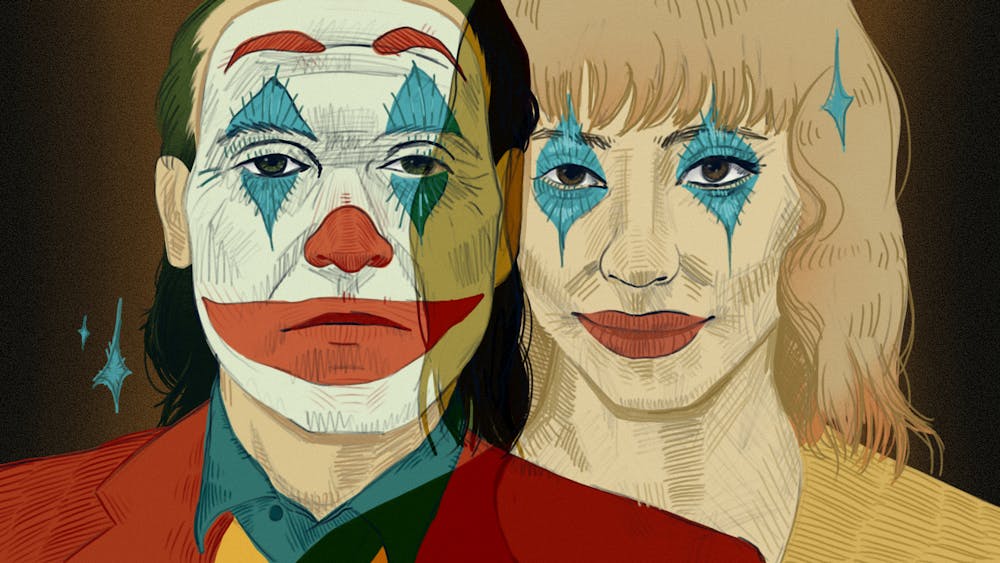The familiar old Cinemark seats and nachos with Diet Coke, backtracked by endless trailers for movies we’ll probably forget about by the time they release in a year or two. But, we’ve been waiting for the Joker sequel ever since the first whispers about it emerged back in 2019. Surely, you remember the debates on social media about who would make a better Harley Quinn: Margot Robbie or Lady Gaga.
With bated breath, many DC Comics fans were hoping the second film would match, if not surpass, the success of the first, where Joaquin Phoenix set an impressively high bar. From the staircase dance to the talk show scene, the direction made this psychological thriller one of the most legendary films of the decade. That’s what brought me, my friends, and many others to theaters this October. But, unlike the first film, where everything intentionally goes wrong to drive the plot, the sequel went wrong for Arthur Fleck and audiences alike.
So, how did Joker: Folie à Deux, flop with renowned actors, an experienced directing team, and a substantial budget? What made this film lose its serious edge?
First and foremost, the atmosphere. In the first movie, Gotham's darkness highlights and accentuates Arthur Fleck’s moral decay. But, in the sequel, the tone shifts too frequently and inconsistently. Alternating between states of utter despair and loneliness to feelings of false hope and faith, the atmosphere lacks cohesion and fails to convey the protagonist's internal struggle.
There is no doubt that the chaotic periods of euphoria and depression are characteristics of Fleck across both films. However, in the sequel, Joker's state is portrayed more as the result of random events, driving neither the plot nor the protagonist’s inner world forward. Changes in color scheme, the insertion of scenes from Fleck's imagination, and other artistic choices visually complement each other but fail to create new meaning. Oftentimes, audiences don’t experience the changes in Fleck’s psyche alongside him, as all focus is consumed by the musical numbers.
Songs, songs, and more songs. Well over a dozen tracks accompany the film, resembling a Disney musical about yet another princess’s coming–of–age struggles, given the song variety, content, and timing. They’re not always well placed, like when “I've Got the World on a String” plays as Lee Quinzel heads to a court hearing. At times, the songs directly follow one another, making viewers lose sight of the deeper, more layered, and ultimately more significant plot. In certain scenes, music undeniably aids in conveying Fleck's emotions, as with the song "The Joker" in the courtroom, highlighting the duality of his feelings and position. Yet the frequency, insistence, and illogical placement of the musical numbers, make the attempt to turn the film into a musical unsuccessful.
Speaking of the plot, it’s hard not to notice the lack of motion and events. The majority of the story takes place in Arkham Asylum where director Todd Phillips depicts Fleck’s daily life during his imprisonment, characterized by inhumane treatment from prison guards and slop–like meals. In this sense, the film fulfills a descriptive function well, but not an analytical one—Fleck’s psychological changes are scarcely included in the plot and lack explanation.
You could argue, with some justification, that the film’s concept doesn’t intend to clearly or linearly explain Fleck’s decline following his transformation into Joker. Even the court case storyline, intended to reveal the truth of the protagonist’s character through meticulous examination, only offers us conjectures. These loose assumptions, created with an obvious nod to more complex psychological arthouse films, detract from the enjoyment of a pop culture movie.
Not even Phoenix can save this sequel. His brilliant performance, constantly interrupted by new songs, is overshadowed by the questionable performances of the other characters. Notably, Gaga's portrayal of Lee Quinzel is one of the film’s most underdeveloped and, therefore, irrelevant, confusing, and chaotic figures. The screen time devoted to Quinzel is insufficient, both in showcasing her vocal talents and revealing any semblance of logic behind her actions. The beloved Harley Quinn character is shown as a superficial and obsessed figure, lacking meaningful development or even a change in personality.
The shifts in Quinzel’s behavior are shrouded in mystery, which, fortunately, is not entirely the case for Fleck. However, the overall storyline of Joker’s love interest might be disappointing for fans who expected equal character development. The other characters simply fade into the background, becoming props in a bizarre blend of romantic musical and blood–curdling thriller.
Ultimately, even for a simple layman, Joker: Folie à Deux is a strange, largely inexplicable chimera. Phillips’ attempt to flirt with the jukebox musical genre while aiming to retain the delicate psychoanalytic tone of the first film has produced something midway between a lackluster pop culture piece on Netflix and a postmodern arthouse film. Joker: Folie à Deux finds itself lost somewhere between Beetlejuice Beetlejuice and Gladiator II, fading into the graveyard of failed sequels.

